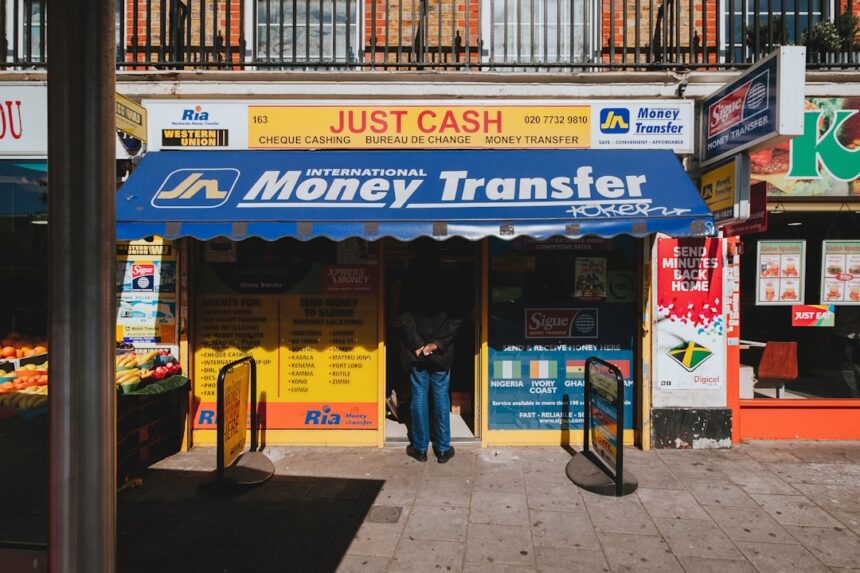In recent years, I have observed a significant increase in unauthorized money transfers, a trend that has raised alarms among consumers and financial institutions alike. The digital age has made it easier than ever for individuals to send and receive money, but it has also opened the floodgates for fraudsters who exploit these systems for their gain. With the proliferation of online banking, mobile payment apps, and cryptocurrency transactions, unauthorized transfers have become a common occurrence, leaving many victims grappling with financial loss and emotional distress.
As I delve deeper into this issue, I realize that the rise of unauthorized money transfers is not merely a byproduct of technological advancement; it is also a reflection of the evolving tactics employed by cybercriminals. These criminals are becoming increasingly sophisticated, utilizing social engineering techniques and advanced hacking methods to bypass security measures. The anonymity provided by the internet allows them to operate with relative impunity, making it imperative for consumers to remain vigilant and informed about the risks associated with digital transactions.
Key Takeaways
- Unauthorized money transfers have been on the rise, posing a threat to consumers and financial institutions.
- Common methods used for unauthorized money transfers include phishing, identity theft, and account takeover.
- Unauthorized money transfers can have a significant impact on consumers, leading to financial loss and emotional distress.
- Recognizing unauthorized money transfers involves monitoring bank statements, being cautious of suspicious emails or calls, and reporting any unauthorized activity immediately.
- Financial institutions play a crucial role in preventing unauthorized money transfers through robust security measures and customer education.
Common Methods Used for Unauthorized Money Transfers
Throughout my research, I have come across several common methods that fraudsters employ to execute unauthorized money transfers. One prevalent technique is phishing, where scammers send deceptive emails or messages that appear to be from legitimate financial institutions. These communications often prompt unsuspecting individuals to click on malicious links or provide sensitive information, such as passwords or account numbers.
Once they have this information, the fraudsters can easily access victims’ accounts and initiate unauthorized transfers. Another method that has caught my attention is the use of malware. Cybercriminals often deploy malicious software that can infiltrate a victim’s device, allowing them to monitor keystrokes and capture sensitive data.
This type of attack can be particularly devastating, as it can go unnoticed for extended periods, giving fraudsters ample time to execute unauthorized transactions. Additionally, I have learned about the rise of social engineering tactics, where scammers manipulate individuals into divulging personal information by posing as trusted figures, such as bank representatives or technical support agents.
The Impact of Unauthorized Money Transfers on Consumers

The impact of unauthorized money transfers on consumers is profound and multifaceted. Personally, I can only imagine the emotional toll it takes on victims who find themselves suddenly stripped of their hard-earned savings. The financial implications are often severe, as unauthorized transfers can lead to significant losses that may take months or even years to recover.
For many individuals, this loss can result in a cascade of financial difficulties, including an inability to pay bills, mounting debt, and even bankruptcy. Beyond the immediate financial consequences, I have come to understand that the psychological effects of being a victim of unauthorized money transfers can be equally damaging. Many victims experience feelings of violation and betrayal, as their trust in financial systems is shattered.
The stress and anxiety associated with such incidents can lead to long-term emotional distress, affecting not only the victims but also their families and loved ones. It is clear to me that unauthorized money transfers are not just a financial issue; they are a deeply personal crisis that can leave lasting scars.
How to Recognize Unauthorized Money Transfers
| Signs of Unauthorized Money Transfers | Actions to Take |
|---|---|
| Unrecognized transactions in bank statements | Contact the bank immediately to report the unauthorized transactions |
| Unexpected withdrawal of funds from your account | Change your online banking passwords and report the incident to the bank |
| Receiving notifications for money transfers you didn’t initiate | Review your account activity and report any unauthorized transfers to the bank |
Recognizing unauthorized money transfers is crucial in mitigating their impact. I have learned that one of the first signs of an unauthorized transfer is an unexpected notification from my bank or payment service provider. This could be an alert about a transaction I did not initiate or a sudden change in my account balance that raises red flags.
Being proactive in monitoring my accounts regularly has become a vital practice for me, as it allows me to catch any suspicious activity early on. Additionally, I have discovered that understanding the common signs of fraud can help me identify unauthorized transfers more effectively. For instance, if I receive communication from my bank requesting personal information or urging me to take immediate action regarding my account, I must approach it with caution.
Legitimate institutions typically do not ask for sensitive information via email or text message. By staying informed about these warning signs and trusting my instincts, I can better protect myself from falling victim to unauthorized money transfers.
The Role of Financial Institutions in Preventing Unauthorized Money Transfers
Financial institutions play a pivotal role in preventing unauthorized money transfers, and I have come to appreciate their efforts in safeguarding consumers’ assets. Many banks and payment service providers have implemented robust security measures, such as two-factor authentication and encryption protocols, to protect their customers’ accounts from unauthorized access. These measures are essential in creating a secure environment for online transactions and instilling confidence in consumers like myself.
Moreover, I have noticed that financial institutions are increasingly investing in education and awareness campaigns aimed at informing customers about the risks associated with unauthorized money transfers. By providing resources and guidance on how to recognize potential threats and protect personal information, these institutions empower consumers to take an active role in safeguarding their finances. It is reassuring to see that banks are not only focused on profit but also on fostering a culture of security and vigilance among their customers.
Legal Consequences of Unauthorized Money Transfers

The legal consequences of unauthorized money transfers are significant and serve as a deterrent for potential fraudsters. I have learned that various laws and regulations exist to protect consumers from financial crimes, including unauthorized transactions. In many jurisdictions, financial institutions are required to reimburse customers for losses resulting from unauthorized transfers if they report the incident within a specified timeframe.
This legal framework provides some level of assurance for consumers like myself who may fear losing their funds without recourse. However, I also recognize that pursuing legal action against fraudsters can be challenging. Many cybercriminals operate from remote locations or use sophisticated methods to conceal their identities, making it difficult for law enforcement agencies to track them down.
As a result, while there are legal protections in place for victims of unauthorized money transfers, the reality is that recovering lost funds may not always be feasible. This underscores the importance of prevention and vigilance in protecting oneself from becoming a victim in the first place.
Steps to Take if You’ve Been a Victim of Unauthorized Money Transfers
If I ever find myself a victim of unauthorized money transfers, there are several critical steps I must take immediately to mitigate the damage. First and foremost, I would contact my bank or payment service provider as soon as possible to report the incident. Prompt reporting is essential because many financial institutions have specific timeframes within which they can investigate and potentially reverse unauthorized transactions.
In addition to notifying my bank, I would also consider filing a report with local law enforcement and relevant consumer protection agencies. This step not only helps document the crime but also contributes to broader efforts to combat financial fraud. Furthermore, I would take proactive measures to secure my accounts by changing passwords and enabling additional security features offered by my financial institution.
Taking these steps can help prevent further unauthorized transactions and protect my remaining assets.
The Role of Technology in Unauthorized Money Transfers
Technology plays a dual role in the realm of unauthorized money transfers; while it facilitates convenient transactions for consumers like myself, it also provides tools for cybercriminals to exploit vulnerabilities. As I explore this topic further, I realize that advancements in technology have made it easier for individuals to send money across borders instantly but have also created new avenues for fraudsters to operate undetected. One notable aspect of technology’s role in this issue is the rise of digital wallets and cryptocurrency exchanges.
While these innovations offer exciting possibilities for financial transactions, they also present unique challenges regarding security and regulation. As I navigate this landscape, I understand that staying informed about emerging technologies and their potential risks is crucial in protecting myself from unauthorized money transfers.
Government Regulations and Unauthorized Money Transfers
Government regulations play an essential role in addressing the issue of unauthorized money transfers. I have come to appreciate that various regulatory bodies oversee financial institutions and payment service providers to ensure compliance with security standards and consumer protection laws. These regulations aim to create a safer environment for consumers while holding financial institutions accountable for safeguarding their customers’ assets.
As new methods of transferring money emerge, regulatory frameworks must adapt to address potential vulnerabilities and protect consumers from fraud. It is encouraging to see governments taking steps toward enhancing regulations in response to the growing threat of unauthorized money transfers, but ongoing vigilance is necessary to keep pace with rapidly changing technology.
Tips for Protecting Yourself from Unauthorized Money Transfers
To protect myself from unauthorized money transfers, I have compiled several practical tips that can help safeguard my finances. First and foremost, I prioritize using strong and unique passwords for all my financial accounts.
Additionally, I make it a habit to regularly monitor my bank statements and transaction history for any suspicious activity. If I notice anything unusual, I act quickly by reporting it to my bank. Furthermore, I educate myself about common scams and phishing techniques so that I can recognize potential threats when they arise.
By staying informed and proactive about my financial security, I empower myself to minimize the risk of falling victim to unauthorized money transfers.
The Future of Unauthorized Money Transfers and What Can Be Done to Address the Issue
As I contemplate the future of unauthorized money transfers, I am both concerned and hopeful about what lies ahead. The rapid pace of technological advancement means that cybercriminals will continue to develop new tactics for exploiting vulnerabilities in digital payment systems. However, this also presents an opportunity for innovation in security measures and consumer education.
To address this issue effectively, collaboration between financial institutions, technology companies, law enforcement agencies, and government regulators is essential. By working together to share information about emerging threats and best practices for prevention, we can create a more secure environment for digital transactions. Additionally, ongoing education initiatives aimed at raising awareness among consumers will empower individuals like myself to take proactive steps in protecting our finances against unauthorized money transfers.
In conclusion, while the rise of unauthorized money transfers poses significant challenges for consumers and financial institutions alike, there are steps we can take collectively to mitigate these risks. By staying informed about common methods used by fraudsters, recognizing warning signs, and implementing robust security measures, we can work towards a future where unauthorized money transfers become increasingly rare occurrences rather than an everyday reality.
In recent discussions about financial security, the issue of money transfer without consent has become increasingly prominent. An insightful article on this topic can be found on the website “Am I Wrong Here,” which delves into the complexities and legal implications surrounding unauthorized transactions. For a deeper understanding, you can read more about these concerns and potential solutions by visiting the article on their website. Check out the related article here to explore the nuances of this pressing issue.
WATCH HOW My Late Aunt Gifted A Haunted House That Exposed My Cheating Wife
FAQs
What is money transfer without consent?
Money transfer without consent refers to the unauthorized transfer of funds from one person’s account to another without their permission or knowledge. This can occur through various means such as online banking, wire transfers, or other electronic payment methods.
What are the common methods used for money transfer without consent?
Common methods used for money transfer without consent include phishing scams, identity theft, unauthorized access to banking or payment accounts, and fraudulent activities.
What are the potential consequences of money transfer without consent?
The potential consequences of money transfer without consent can include financial loss, identity theft, legal issues, and damage to the victim’s credit score. It can also lead to emotional distress and inconvenience for the victim.
How can individuals protect themselves from money transfer without consent?
Individuals can protect themselves from money transfer without consent by regularly monitoring their bank and payment account activities, using strong and unique passwords, being cautious of phishing attempts, and promptly reporting any unauthorized transactions to their financial institution.
What should individuals do if they suspect money transfer without consent has occurred?
If individuals suspect that money transfer without consent has occurred, they should immediately contact their financial institution to report the unauthorized transaction, freeze their accounts if necessary, and file a report with the appropriate authorities such as the police and the Federal Trade Commission.




